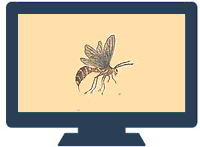Entomology, Department of
Date of this Version
2016
Document Type
Thesis
Citation
Entomology Distance Master’s Project, University of Nebraska-Lincoln, 2016
Abstract
Today, Florida’s most important crops such as corn, peppers, and snow beans owe their existence to constant vigilance by the Florida Department of Agriculture (FDACS), United States Department of Agriculture (USDA), and Customs & Border Protection Agricultural Specialists (CBP); all three agencies work together to keep many dangerous pests out of the state. Diligent inspectors working alongside the Customs officers, meet all arriving vessels that arrive by land, sea, or air. The officers inspect cargo and passengers’ baggage, the holds of vessels, cabins, crew’s quarters, and storerooms of vessels themselves to keep out potential insects hitch-hiking on commodities or on the vessels. The interception of insects, diseased plants, and disease-causing organisms is a daily occurrence. Numerous attempts are made to smuggle plants into the state, and each year the ever-increasing array and speed of commercial and private means of transportation add to the difficulty of detecting and excluding foreign pests. The objective of this paper is to summarize the different modes of insect introduction into Florida over an eleven-year period (2005–2015), and to discuss the surveillance and detection efforts undertaken by government agencies: Florida Department of Agriculture and Consumer Services (FDACS), Custom and Border Patrol (CBP), and United States Department of Agriculture (USDA).
Table of Contents
Introduction 2
Methodology 5
Pathways and Patterns of Insect Pests Introduction 6
Impacts 11
Regulations 12
Surveillance and Detection Strategies 13 … Fruit Fly Trapping 13 … Plant Pest Surveys 14 … Public Outreach Program 14 … Export and Import Monitoring 15 … Biological Control 15 … Detector Dog Program 15
Conclusion 17
References 18


Comments
Copyright © 2016 Gangadai Azore